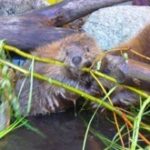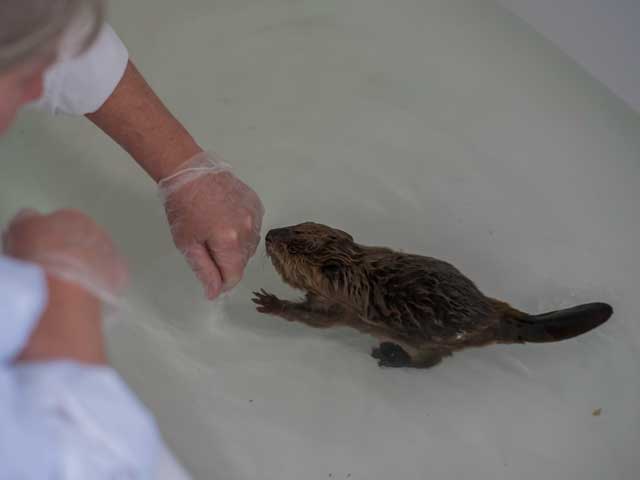Natural History of Beavers
Beavers are the largest rodent native to North America and can be found throughout Saskatchewan. They can weigh as much as 60 lbs. and average 40-45 inches long to the tip of the tail. The tail itself is about 16 inches long and 4-4 1/2 inches wide. When disturbed, or frightened, they slap this broad tail in the water as an alarm to others. The tail is used as a rudder in swimming and an aid in diving or a prop while sitting up to gnaw on a tree. Beavers have webbed hind feet that make them excellent swimmers.
Because a beaver’s incisor teeth grow continuously throughout their life, the beaver must wear them down through constant chewing resulting in much of the damage to trees that people complain about.
Beavers prefer a few specific types of trees, but will sample almost any. They eat aquatic plants, grasses, sedges, and rushes along with the bark of most deciduous trees and shrubs in the summer. In winter, they are restricted to mostly the bark of trees (aspen, cottonwood, and willows are preferred). which they keep fresh by cutting and hauling into the water before freeze-up. They may go up to 650 feet from shore to find trees.
Beavers pair for life. They live in family groups with their “kits” who remain with the family until they are two years old, at which time they find a mate, move out and build their own dam. Beavers are slow on land, but quite agile and speedy swimmers. They store oxygen and can remain submerged for at least 15 minutes.
Their engineering abilities are legendary and deservedly so.
Sadly, the beaver is commonly perceived to be a nuisance, which is a troubling misperception. If you are struggling to co-exist with some beavers in your neighbourhood, please visit The Fur-Bearers website here to find some humane solutions.






